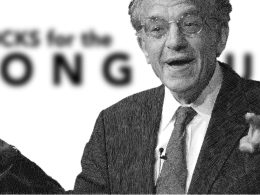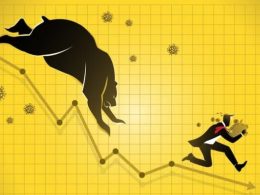by Shannon L. Saccocia, CFA, Chief Investment Officer—Private Wealth, Neuberger Berman
Markets have been stumbling over tariff plans, but tax reform and deregulation could eventually smooth the way for investors.
With the first three months of 2025 now behind us, it may be difficult for investors to reconcile the enthusiasm that was evident in market outlooks published ahead of President Donald Trump’s second Inauguration Day with the events that have followed. The opportunities presented by the incoming administration’s platform pillars had the potential to underpin another strong year of equity market returns, compounding the last two years in which U.S. large cap equities delivered in excess of 20% annually. Extension of the 2017 Tax Cuts and Jobs Act, revamped leadership across U.S. federal agencies translating into a deregulatory impulse, and the resulting impacts of improved business confidence on consumers were deemed likely to translate into stronger topline economic and bottom-line earnings growth for 2025.
Admittedly, we were anticipating that the path would not be an entirely smooth one, expecting a modest uptick in volatility as President Trump unleashed a flurry of executive orders. We were also cognizant of the pull-forward of this enthusiasm in market pricing and the possibility for profit-taking, given the sizable gains of the prior 24 months and the flexibility afforded by a new tax year. However, the volatility of the Trump administration’s initial weeks in office, and the impact of policy announcements on business and consumer sentiment, as well as lowered expectations for economic growth and earnings, weighed heavily on equity and fixed income markets.
The winners of 2023 and 2024 felt the pain most acutely, as U.S. technology and consumer discretionary names crumbled on fears of slowing momentum in artificial intelligence, lofty valuations and a more discerning consumer. While large-cap energy, health care and financial stocks performed well, contributing to the value-versus-growth differential in the quarter, the “broadening” trade left U.S. small-caps stocks behind as the wave of economic pessimism and an increased threat of recession turned sentiment sharply negative. Instead, European and Asian stocks benefited from a reversal of fortune given euphoria over a turn toward fiscal accommodation in Germany and expectations of further recovery in China. Global yields moved modestly lower on expectations of potentially slower growth, providing diversified investors with some insulation against their equity losses. Gold and silver soared as investors flocked to these “safe(r) havens,” and the U.S. dollar weakened modestly against all major currencies.
Shifting Fortunes
Major Market Performance, Year-to-Date and One Year
Source: Bloomberg, through March 31, 2025. The following indices are represented: S&P 500, MSCI ACWI (global stocks), Bloomberg Municipal Bond, Bloomberg U.S. High Yield 2% Issuer Cap, Bloomberg EM USD Aggregate, Bloomberg U.S. Aggregate Bond, MSCI Emerging Markets, MSCI ACWI ex-U.S. (international large and midcap stocks) and Bloomberg Commodity.
Treading Around Tariffs
One could argue that the announcement of new tariffs was no real surprise, and therefore that investors should have been positioned for the risk. The challenge to that thinking has been the scope of the plan, broadened meaningfully with President Trump’s executive order signed on April 2. Compounding the already announced U.S. tariffs on Canada, Mexico and China, affecting about $1.5 trillion in goods and raising average rates to levels not seen since the 1940s, were a slew of new levies. These included a 10% across-the-board tax on all U.S. imports as well as meaningfully higher tariffs for 60 of the “worst offenders,” including 34% on China (on top of the 20% already announced),1 20% on the European Union and 24% on Japan, all of which were slated to go into effect in April.
While there are notable exclusions to the above—namely steel, aluminum, autos and auto parts, copper, pharmaceuticals, semiconductors, lumber, bullion, energy and certain minerals that are not available in the United States—separate tariffs are likely to be applied. Most importantly, the widened scope of tariffs could sharply raise prices on a range of end consumer products, whether explicitly or via pass-through pricing from producers up and down the supply chain. Few industries appear fully insulated from these actions.
What is clear is that President Trump is willing to walk down a number of paths to right what his administration believes are wrongs relating to trade policy; he also appears comfortable, at least in the short term, with a negative capital market reaction to his plans. We should acknowledge that retaliation is likely, particularly from the “worst offenders.” There are likely to be countries that take issue with the Trump administration’s calculation of a “tariff charged on the U.S.,” given that this was based on the trade balance rather than the actual levies on U.S. goods—and therefore is difficult to counter in the short to medium term. Admittedly, the potential for heightened tensions with Canada and Mexico to accelerate a renegotiation of the USMCA could translate into a stronger rationale for U.S. producers to further expand their U.S. production over a longer timeline, creating the foundation for a revitalized production economy. There is also the little-discussed potential of our trading partners broadly reviewing and perhaps lowering tariffs currently in place on U.S. products. In the absence of this longer-term thinking, however, tariffs are, at their core, an increase in prices—and the American consumer, fatigued by years of higher prices, may continue to struggle while waiting for the potential long-term benefits.
Trade Is a Key Wild Card
2025 Real GDP Scenarios Base on Tariff Levels
Source: Neuberger Berman. As of April 4, 2025.
The Fed Finds Its Footing
The tariff overhang and the commensurate growth scare have pulled the Federal Reserve back into the narrative. The efforts of the U.S. Department of Government Efficiency (DOGE), too, have weighed on sentiment. While the eventual size and scope of the staff reductions is difficult to estimate, their potential impact is not limited to employment readings and lost consumer activity. The community of Americans with a friend, family member or neighbor employed by the U.S. government is vast, and the rapidity and lack of prescriptiveness in the cuts has created discomfort. In addition, many U.S. companies have contracts with the federal government, and with so much change, the potential impact to the stability of those revenues is a source of anxiety that is proving difficult to quantify at a more macro level.
This explicit pressure on employment, coupled with dampened business confidence, has resulted in what Fed Chair Jerome Powell described in March as a “low-firing, low-hiring” labor market. While the Fed maintained its unemployment projection at a modest 4.4%, the upward pressure on prices from tariffs did prompt it to meaningfully revise its economic growth projections, forecasting 1.7% growth in 2025 and 1.8% in 2026, versus 2.1% and 2.0%, respectively, as of December. In addition, the Fed thinks that tariffs may dampen further progress on inflation, with core PCE closing the year at 2.8% and 2026 at 2.2%, compared to the central bank’s projections of 2.5% and 2.2%, respectively, as of December.
The Fed translated these expectations into a slightly more hawkish “dot plot” of projected fed funds rate levels. Specifically, while the dot plot is still showing two rate cuts in 2025, eight participants predicted one or no cuts this year, and only two are expecting three cuts. The tone of the Fed’s March statement, coupled with the changes in projections, suggests that the Fed remains concerned about renewed upward pressure on inflation, which Powell confirmed in his remarks on April 4. In addition to reiterating its commitment to “maximum employment and returning inflation to its 2% objective,” the statement acknowledged that the Fed would incorporate a “wide range of information” in assessing its monetary policy stance, including “financial and international developments.”
Conclusion: Looking to the Next Horizon
With the path to the neutral rate still uncertain, the Fed will watch along with investors and CEOs as we move through this pivotal period of tariff decision-making. While tariffs are likely to remain a major thread in the narrative for the rest of 2025, we believe that attention will likely shift in the second half of the year to Congress and one of the other main pillars of the administration’s platform: extending the 2017 tax cuts. We believe this will be a welcome change for investors, as it reflects one of the potential tailwinds for businesses and consumers that were identified during the Trump campaign.
A refocus on the pro-growth impulse of lighter regulation is also likely to come to fruition, as the handoff from the sweeping efforts of DOGE to the departments themselves for a more targeted approach could be at hand. This may also help to alleviate some of the second-derivative concerns that face companies with exposure to the U.S. federal government. The overarching challenge for investors, however, is that, on a long-term basis, encouraging a more efficient and pragmatic approach to the operation of the federal government and creating a strategy to improve the competitive positioning of American companies are both beneficial, but the path to achieve these goals requires a thoughtful, long-term approach.
In short, while the scope and disruption of tariff announcements has been broader than anticipated, we believe that the U.S. will likely avoid a meaningful and protracted economic deceleration; we are not projecting a recession in 2025. As such, we remain constructive on risk assets, including public and private equity and credit, recognizing the benefits that private markets provide in shielding investors from short-term volatility.
Moreover, we believe that the rotation away from the concentrated equity performers of 2023 and 2024 is sustainable, and that the response to changes in U.S. trade policy, in particular, may catalyze economies in Europe and Asia to stimulate growth, perhaps narrowing the gaps in multiple expansion and earnings growth that have prevailed over the last decade. Importantly, allocating capital during market inflection points can foster long-term success, as can staying committed to strategic allocations, reducing idiosyncratic risk and ensuring diversification—all things we focus on for our clients every day regardless of the political climate.

















